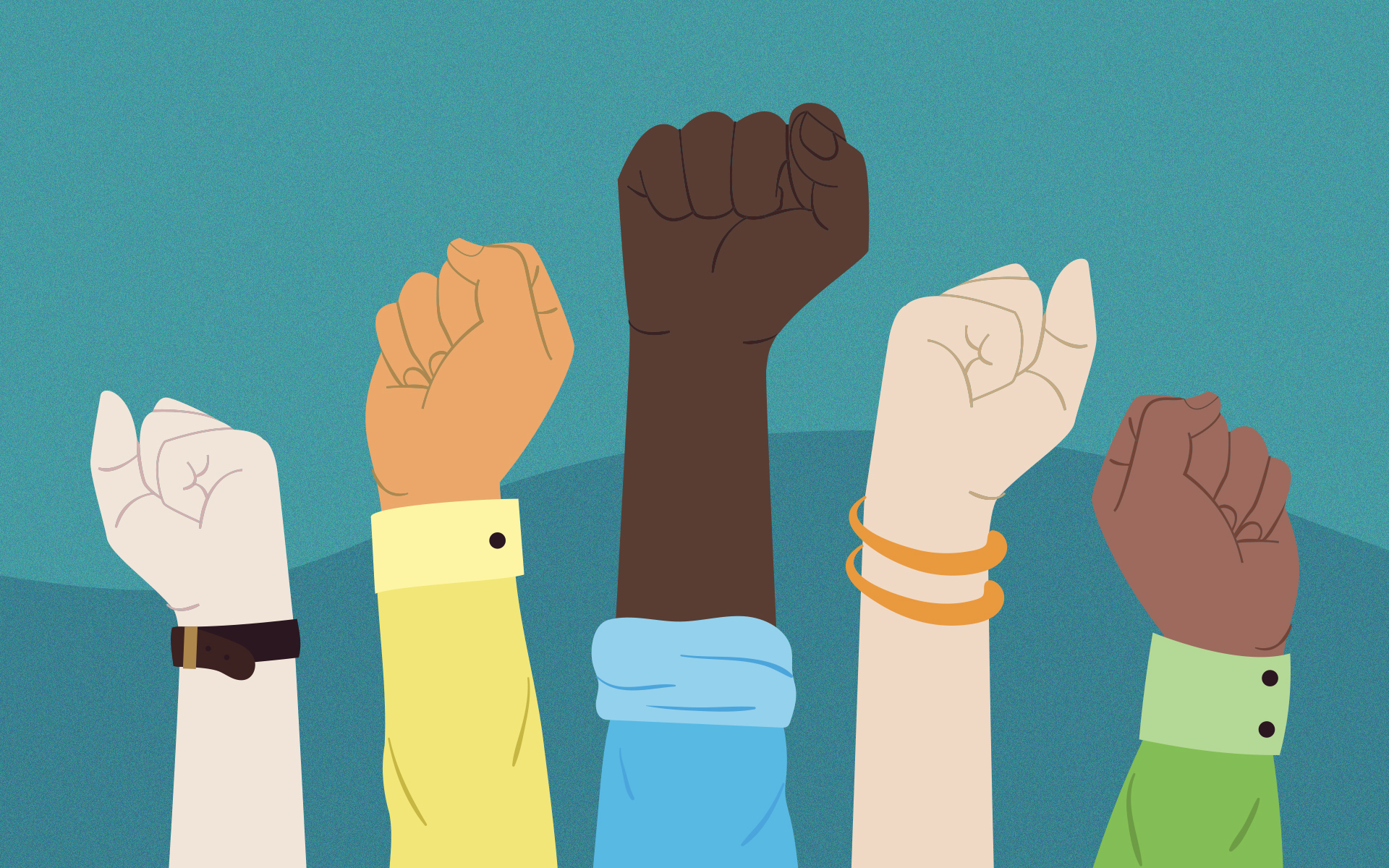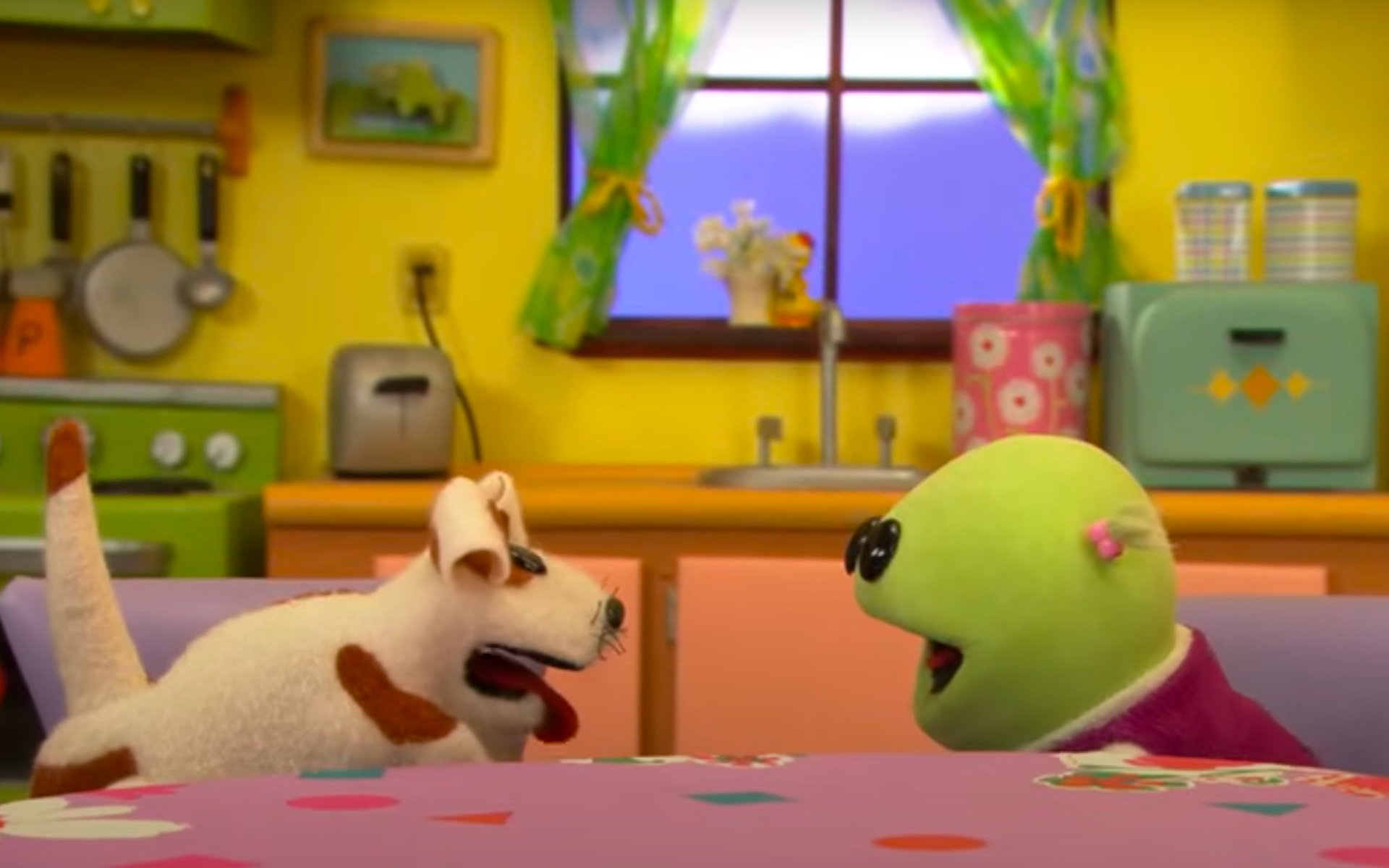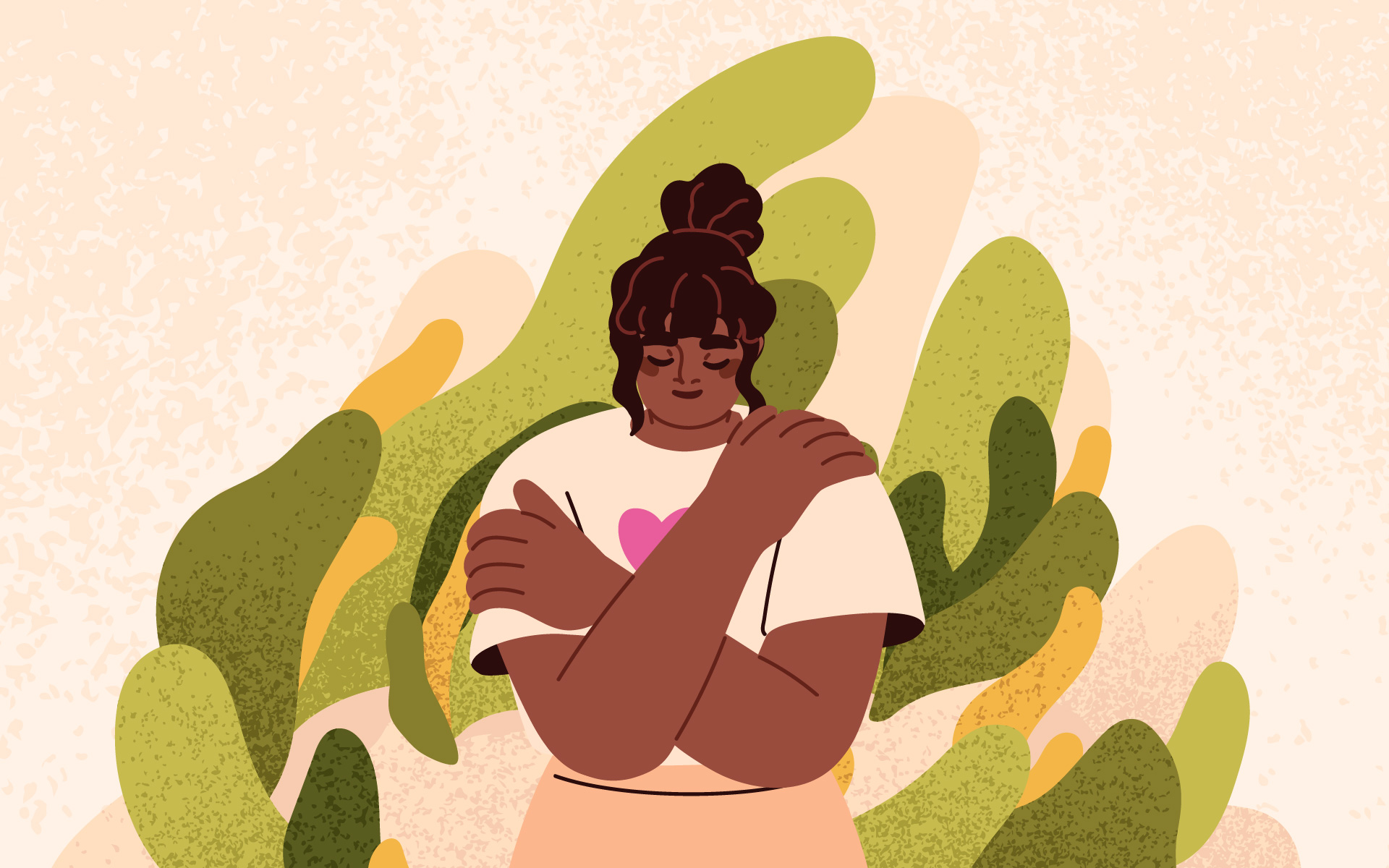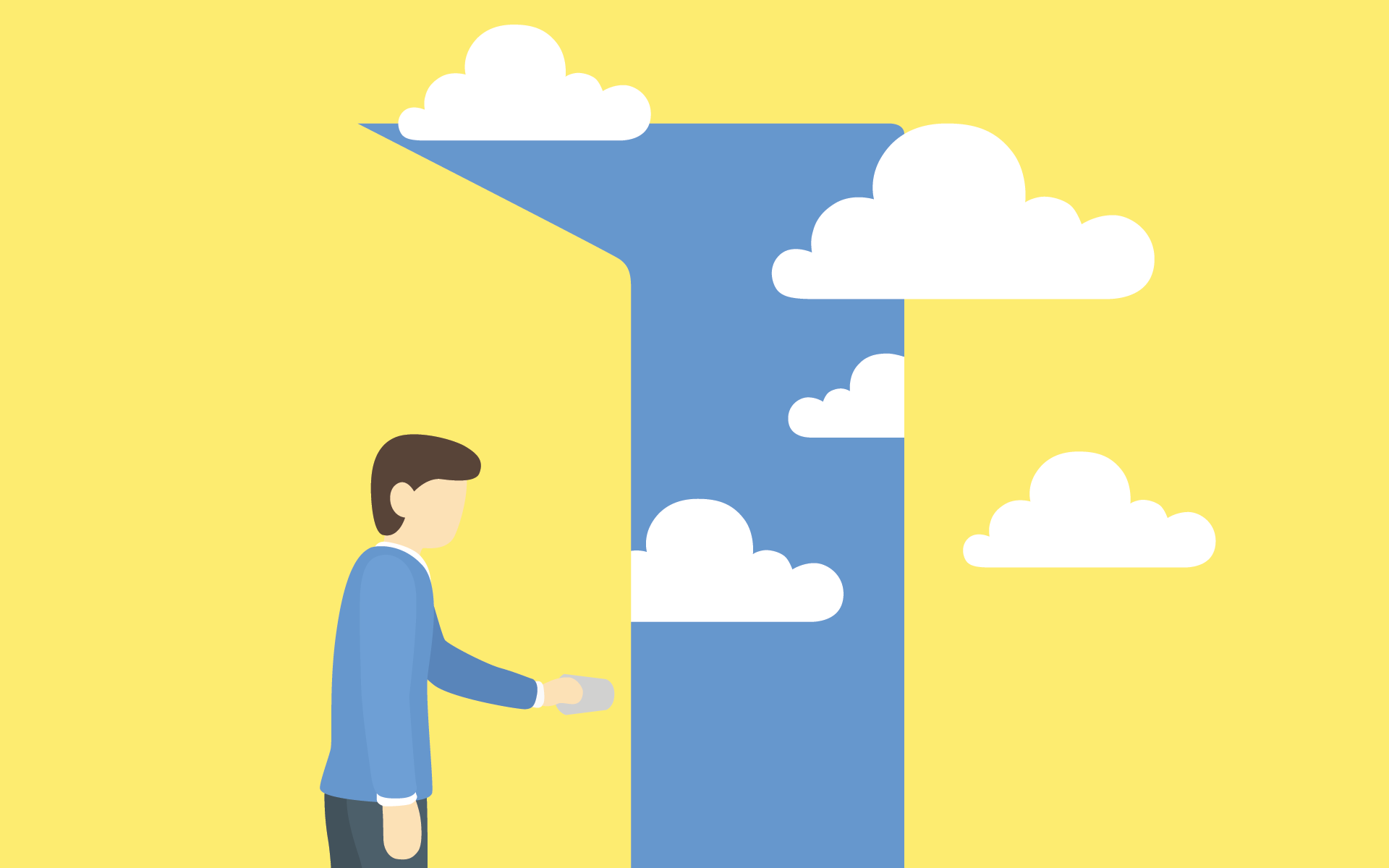Welcome to the second article of our series on mindfulness for racial healing by Tovi Scruggs-Hussein. You can read the first article of the series here.
If you have questions please send them to [email protected] and we may include them in a future Q&A article with Tovi’s response.
In my first year as a teacher, I distinctly remember the moment I looked around my classroom on the first day of school, as all teachers do to assess their circumstance, and remember what I told myself about what I saw. There were lots of Brown and Black students, a few White students and one Asian student. I remember thinking, this Asian student’s not gonna need any of my help. He’s gonna be just fine. My body language gave away my thinking as I literally turned my body away from him. I remember looking at the White students and the feeling I had about them was simply neutral, because I knew the system was designed for them, and thought they were also going to be just fine. Then, I looked at my Black and Brown students and thought, Huh, they’re probably going to need more of my attention.
When I was in school as a young girl, I attended school with lots of White and Asian children, and in all of the classes that I was struggling in, Asian students seemed to do really well. They performed the way I wished I could. I noticed this as it happened throughout elementary school, middle school, high school, and university. All this led to when I became a teacher and my biases were positive about the Asian students, fairly positive around White students, and negative about my Black and Brown students—accepting the all-too-traditional narrative of Black and Brown students in our schools. Of course, it was help I was more than willing to give them, and that too was a part of my bias.
We come to understand not only what is happening in our outer landscape, but also our inner landscape, and in the case of bias, they are both important, as we have to illuminate it before we can interrupt it.
Because of our biases, we often favor our in-group, even if the bias we hold isn’t completely positive. The connection and the socialization of the in-group, in this case, added an extra layer of care. It’s also important to add that the societal narrative fueled my bias so strongly that I had to use self-talk and rationality that acknowledged that I was not any different than my Black high-school students; I was a good student and was college-going. They were too. The traditional narrative caused me to “other” them—all due to bias. So, while bias can work in favor of our in-group, it can also work against our in-group and result in internalized oppression (a recognized understanding in which an oppressed group accepts the methods and incorporates the oppressive message of the oppressing group against their own best interest.)
My conditioning and lived experience through birth and my identity, through my education, through societal conditioning, lent to the bias I held.
We’re All Biased
We all go through a conditioning process as we grow up and this is where we develop our biases. All humans go through this and anyone who tries to tell you that they don’t have biases hasn’t spent much time learning about them or examining their own beliefs and conditioning through self-exploration.
A few years after I had this experience with my first classroom of students, after cultivating a mindfulness practice of deep meditation every day, I became fully aware of how the biases I had were not conducive to teaching all students equally. I knew that if this was happening to me, it had to be happening to other teachers, and though it is embarrassing—and even shame-inducing—to think I was unaware of my biases, I now share this story to teach about the power of bias and the impact of these biases when they go unchecked.
3 Facts About Bias
Before we delve into possible ways for working with bias, it’s important to name three facts that tend to come up when we dive into it.
1. Talking About Bias is Hard
Bias is indeed considered to be a very uncomfortable topic of discussion—so uncomfortable that many of us avoid it as a topic in our personal contemplation. It can be so triggering we don’t even want to let ourselves think privately about it.
Now, more than ever, we know that this is not only because exploring our own biases can uncover unfortunate truths about our unequal society, but mainly because it can uncover things we don’t want to admit about ourselves. Taking into consideration the level of most people’s discomfort with this kind of personal inquiry, mandatory training can actually result in reversing the work of becoming more culturally aware. Often, people are concerned or fearful about creating division and the possibility of losing relationships for saying “the wrong thing” in a training. As my dear colleague and racial equity consultant Joe Truss says, “Racial-equity work is like trying to defuse a bomb and cutting the wrong wire.” Indeed, we see this happening over and over again in all kinds of spaces, so our awareness that this work is uncomfortable is an important understanding to have and be prepared for.
2. No One is Exempt From Bias
No one is exempt from deeply rooted personal biases about all kinds of things. We come by them naturally, but we tend to dismiss or minimize their impact. Now is the time to figure out why, and how we might learn more.
3. Bias Is Harmful
Even though we aren’t always conscious of our bias, it still affects our thoughts, behaviors, and beliefs. It informs the way we go about our lives every day and how we treat and engage with others. While most like to say that our bias is implicit and almost always plays out in unintentional ways, I want to offer that while our bias is often implicit, it is harmful just the same. The outcomes of implicit versus explicit bias are the same; the key difference is the intention and the conscious awareness—or lack thereof.
How Mindfulness Can Help
Mindfulness meditation practices hold many of the keys to our increased understanding of our biases and can offer a pathway to interrupt our bias-based habits that reduces their negative impact. Throughout this process, feelings of guilt and shame may arise. Working to avoid getting stuck in those feelings is essential to help us continue to learn.
Simply put, illuminating and interrupting implicit bias is a marathon rather than a sprint, it takes buckets of stamina and resilience. Strengthening our understanding of ourselves with the help of meditation can provide a self-compassionate path forward.
The more we know about present-moment awareness and the power it has to mitigate bias, we understand that it serves as a dual-awareness. We come to understand not only what is happening in our outer landscape, but also our inner landscape, and in the case of bias, they are both important, as we have to illuminate it before we can interrupt it.
The Neuroscience of Bias
We often aren’t able to actually rid ourselves of biases because it is virtually impossible to erase years of conditioning. Our power lies in interrupting the bias, catching it before we act on it. The bias itself does not create harm. Acting on the bias is what creates harm.
Because many find this work rigorous and uncomfortable, it’s common for people to simply give up. Learning to control the ways we act on our biases requires the ability to regulate emotions and slow down reactions—two skills that are built by practicing meditation. Here’s how it works in three key areas of the brain:
- The Amygdala: is the part of the brain wired to protect us from danger. When we perceive a threat, the amygdala releases stress hormones that induce the flight/fright/freeze response, and we are likely to behave reactively, rather than thoughtfully. Neuroscience shows that regular meditation practice may actually shrink the amygdala and that it reduces dramatic reactivity. In short, with regulated nervous systems we are better able to think things through and come to understanding things we may have not been able to realize before.
- The Insula: This deep internal area of the brain is the center for empathy and compassion According to neuroscience, because of mirror neurons, we can actually increase feelings of love, care, compassion, and empathy by engaging in meditative practices that focus on these emotions. One popular kind of meditation that supports this is called loving-kindness meditation.
- The Prefrontal Cortex: This area of the brain brings it all together. It’s our executive functioning center that helps us make decisions, plan for the future, and regulate our behavior and emotions. As we deepen our meditation practice with consistency, it helps the prefrontal cortex recognize our deep inner circuitry for love, care, and compassion, and it works to keep us focused, aware, and open to ways we can be most humane and productive in the world.
Working With Shame and Fear
It follows then, that meditation positively impacts our ability to learn all kinds of new things, but what is so key to learning about our implicit biases, is the ability to become aware of them. Again, conversations about bias or anything to do with race feels threatening to many people. If we are consciously working to regulate the amygdala and incorporating meditations in regular practice, it follows that people will be more able to talk about bias and explore their implicit biases more effectively.
Becoming aware of our biases is a big doorway in, and what I found profound about exploring them in mediation is that it can be a very private experience initially, helping to thwart any feelings of guilt and shame because I could initially keep my newfound awareness to myself, revealing these truths when I felt ready.
Becoming aware of our biases is a big doorway in, and what I found profound about exploring them in mediation is that it can be a very private experience initially, helping to thwart any feelings of guilt and shame because I could initially keep my newfound awareness to myself, revealing these truths when I felt ready. However, when we have the right container and act more courageously to create a better society free of these -isms, it proves to be comforting to do this work with others so you can encourage each other through the difficult awareness. That stage was particularly illuminating for me, and once I realized how much better all of my students would learn when I was aware of my biases, I couldn’t get enough exploring. I wanted to uncover everything in my past that had fallen into that category of “never having been examined.”
Where to Start: Mindfulness Practices for Working With Bias
Consider Your Racial Autobiography
When it comes to this initial stage of learning, oftentimes people find it helpful to think about their own racial autobiographies. Taking a personal look at the racialized experiences you have had in your life, the attitudes and behaviors in your family and the culture you were raised in, are helpful tools to honestly explore what your conditioning might be, resulting in the values, beliefs, behaviors and ways you are in the world.
Finding a group of like minded people that includes people of all races is another way to explore and identify deeply held implicit bias. There are many people who want to learn more, but they aren’t really sure where to start and are afraid of saying or doing the wrong thing. Rest assured, when you embark upon this journey with an open mind and a willingness to explore all the things you don’t know that you don’t know, your learning journey can be a rewarding adventure, and you will discover you are not alone. (The Implicit Associations Tests offered through Harvard University might be a great way to start.)
The Mindful Pause
In order to get to the point where we can not only recognize our biases, but make sure we are able to interrupt acting upon them, the final step in doing so is what I love to refer to as the “sacred” pause, but can also be referred to as a mindful pause.
During the pause, we do four things that have to do with the inner-landscape: stopping, breathing, noticing, and reflecting. The fifth thing that happens is on the outside—and that is the responsiveness that we bring.
Hopefully our responsiveness is skillful because we’ve taken that pause. This pause can happen in seconds, it can happen in minutes, hours, days, and in fact, when we say, “I think I’m going to sleep on it,” that’s a way of using a very long pause.
Be gentle with yourself, create/maintain a consistent meditation practice, find like-minded people, and keep learning. Understanding our deeply ingrained biases based on how different we are will help foster deeper human connection and a sense of shared purpose and to heal our deeply divided world.
Journaling Prompts for Reflection
To take your learning about bias deeper, you may find it helpful to journal about or just to consider the following prompts. Remember, there are no right answers. The more honest you are, the better.
- Explore how you have come to your current understanding about bias through your work training/lived experience/course work/etc.
- Consider fundamental questions you have about bias and implicit bias. What confuses you? What feelings do you have about it?
- In regard to the information in this article, what resonated deeply with you? Consider why and explore shifts in your understanding that may have happened. Did anything make you feel uncomfortable? What do you want to learn more about?
- Explore what level of awareness you have about your implicit biases, and how you might become more aware of them?
- Consider who you can comfortably talk to about bias and other issues about race/racism. Consider how you might be able to create time and space to work together on developing more awareness about implicit bias.
A Guided Meditation for Interrupting Bias
This meditation can help us interrupt and illuminate our biases. This is one of my favorite meditations to do because it starts with what I refer to as “emo-sitting”—emotional sitting, which means allowing ourselves to be permeated by music to more fully access our emotions, thoughts, memories, or experiences.
- Before engaging in a meditation where we sit with the guidance of my voice, I suggest we begin by listening to a beautiful song sung by Billy Porter and India.Arie. The song is called Carefully Taught, and it’s about four-and-a-half minutes long. So, if you choose, I invite you to play that song now and then to engage in this meditation.
- We want to allow ourselves to sit comfortably, being reverently alert, and closing our eyes or gazing down. Then, taking three deep breaths at a pace that feels good for you.After those deep breaths, just allowing your breath to settle at a rhythm that feels restorative and relaxing. Generally, this means we might slow our breathing down and bring our breathing more fully down into our stomach area. Let’s try that together for a few moments.
- As we start to explore our own bias and to support our healing from our bias, I invite you to think about your own childhood and how you may have been “carefully taught.” What bias were you taught as a child?
I remember being a third grader, playing on the playground and I was really athletic. Because of my athleticism, I was able to play with the fifth graders. I remember playing with this one particular White fifth-grade girl and I don’t remember what brought on the fullness of the conversation, but she said to me while we were playing, “Tovi, I don’t like Black people, but I like you.” She was in fifth grade. “Tovi, I don’t like Black people, but I like you.” And me being in third grade and wanting to be liked and enjoying that I could play with the older kids, I took that as a compliment.
Later, my mother would pick me up from school and I excitedly told her the story of playing with the fifth grader and what she had told me. “Mommy, Mommy! She really liked me and she said she didn’t like Black people, but she liked me.” And my mother looked at me and got very serious. And she said, “Miha, that’s not a compliment.” And my smile went away. And in my confusion I said, “Why, Mama? Why not?” And she went on to explain to me why it was not a compliment.
How does a fifth grader know to say that? And I would sit with this wondering. And there I was in third grade, and my conversations about a divisive world, race, and bias had already begun. I, too, was being carefully taught. There we were, maybe six, seven, or eight, and learning—as the song says—”to hate all the people our relatives hate.” And so again I ask, How were you carefully taught? - Let us just sit and be with what arises. As we think about our own conditioning where we learned some of the bias and practice that arises in us now, generations and decades later, can we trace it back to when the seed was planted, so that we can unearth that seed in us?
- As we explore our bias with both compassion and self-compassion, I invite in forgiveness. Can we forgive who taught us this bias? Can we forgive who shaped our conditioning? Because more often than not, we love them, and it is okay to love them. They, too, were carefully taught and then went on to teach us what they had been taught. So we let them know, “I forgive you for misteaching me.” They are products of this society just like we are. There is compassion in our forgiveness.
- Can we bring ourselves to self-compassion and self-forgiveness for the times that we acted on this bias? For even holding the bias? Now we know better and we can be better and we can do better. When we think about self-compassion, I love to think about what Kristin Neff says—That self-compassion is like talking to ourselves the way we would talk to someone that we love. When you speak to yourself like someone you love about your own bias, what do you say to yourself? Let it be okay to forgive yourself and love yourself in spite of your bias. Let it go.
- There are no villains. We are all here experiencing our own evolution and healing for the transformation of a better humanity. There are no villains. Let us take a deep breath on that.
- As we start to come out of this meditation into our present awareness, let us make a commitment to interrupt our bias. We acknowledge that knowing it gives us power. The self-awareness of knowing our bias is an empowering act of courage. And we become even more courageous if when we feel it arising in us, we take a pause and we interrupt it. We don’t act on it. The bias in and of itself is not harmful. Acting on it creates harm. So we interrupt acting on it. And that is our commitment to a better humanity. That is our commitment to our own self-healing and self-transformation, for systemic transformation. Breathe that in.
This article is based on content from Tovi Scruggs-Hussein’s Excavating Bias Workshop at Racialhealingallies.com.







